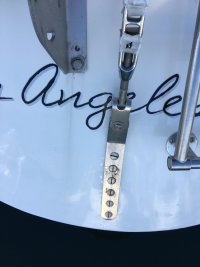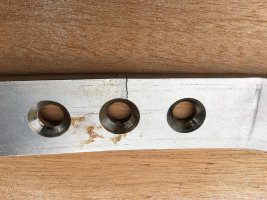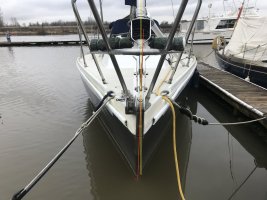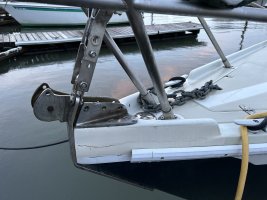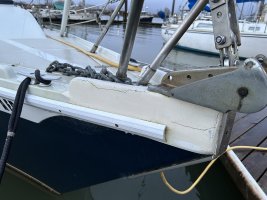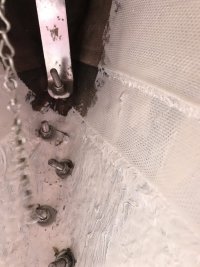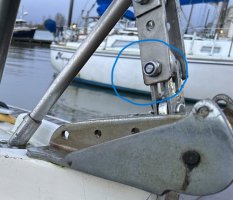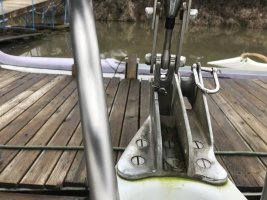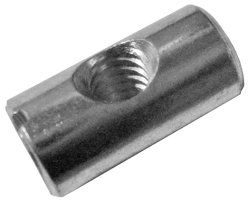Different SS plates will exhibit different "aging. When we removed all of the plates on our boat for the re-fit, I was really curious to see if we'd find any microscopic (or maybe not so micro....) cracks. Our complicated welded bow fitting (same as most 80's E boats) was fine.

I buffed it up to a mirror polish before reinstalling.
Our big SS back stay tang was also in perfect condition, and was also polished up. Ditto the shroud base fittings. However, a sister ship had to replace the BS tang, a year prior, due to small cracks around several bolt holes. I saw the part and it was indeed worrisome once removed and cleaned up.
Our ship wright told us that this is not unusual. A lot of boats over 30 years old (to use round numbers) will have SS that is either corroded where you cannot see - behind or under - and also will develop cracking.
Everything depends on the alloy and the fabrication and installation procedures done all those decades ago. And, how well sealed it has been to keep water out from around the back or any parts under a deck.
We inspected all of the bolts for the bow and stern plates, too. Buffed the heads to a mirror finish. Satisfying Work!

